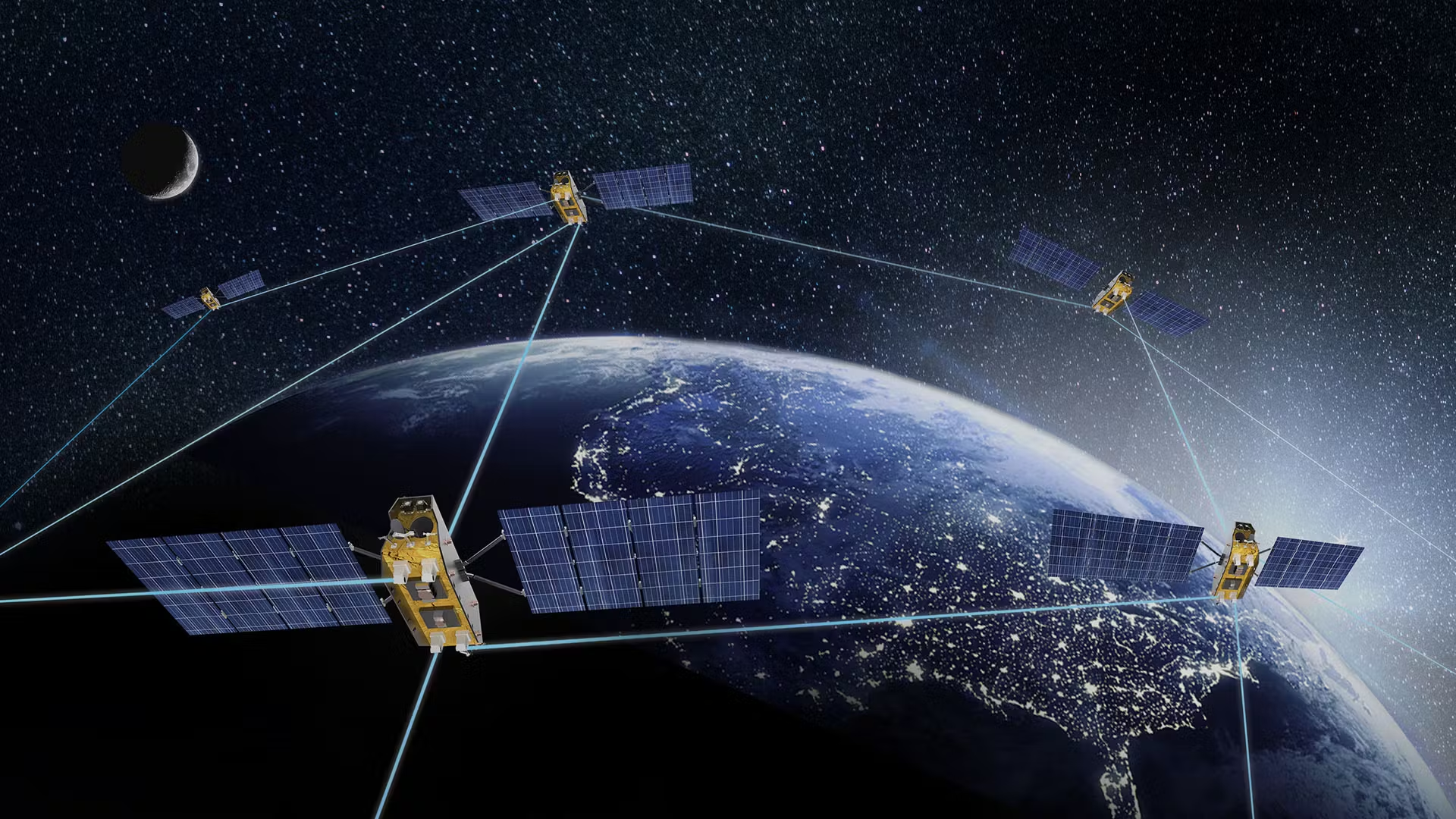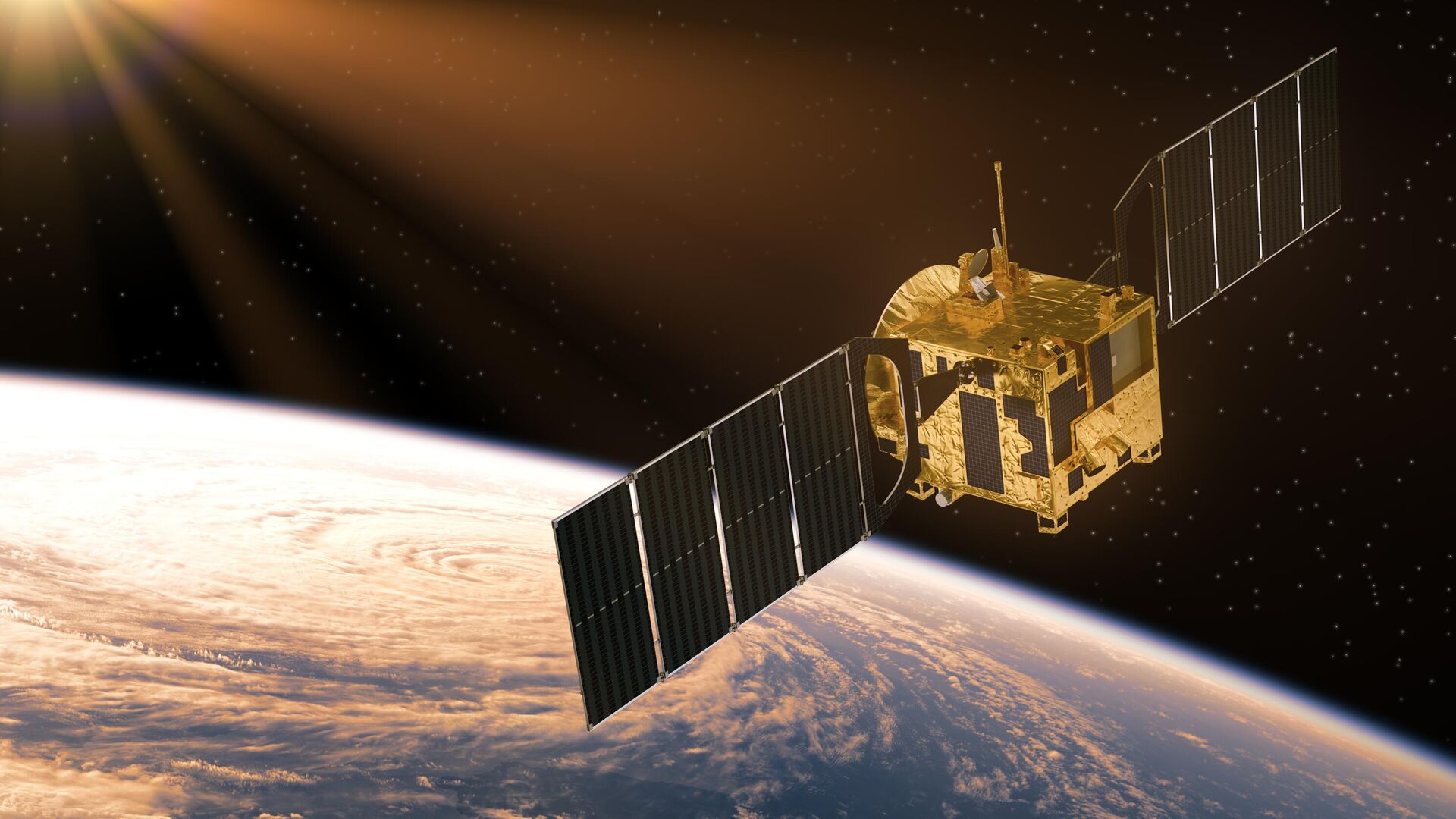LEO Satellite Business Solutions Complete Guide to Global Connectivity

In today’s hyper-connected world, businesses require reliable, high-speed internet connectivity regardless of their location. LEO satellite business solutions are emerging as the game-changing technology that addresses this critical need.
Low Earth Orbit satellites, positioned between 160 to 2,000 kilometers above Earth, offer unprecedented advantages over traditional geostationary satellites. These innovative systems make them ideal for enterprise applications requiring consistent global connectivity.
What Are LEO Satellite Business Solutions
LEO satellite business solutions represent a revolutionary approach to enterprise connectivity using Low Earth Orbit satellite technology. These systems operate at altitudes between 160 to 2,000 kilometers above Earth, significantly closer than traditional geostationary satellites.
Unlike conventional satellite internet, which suffers from high latency due to distance, LEO satellites provide low-latency connections comparable to fiber optic networks. This proximity enables real-time business applications, including video conferencing, cloud computing, and VoIP communications.
Understanding LEO Technology for Enterprises
Low Earth Orbit satellites represent a paradigm shift in satellite communication technology. Traditional geostationary satellites orbit at approximately 35,786 kilometers above Earth, resulting in signal delays of 500-600 milliseconds. In contrast, LEO satellites operate at much lower altitudes, typically between 160 to 2,000 kilometers. This proximity reduces latency to as low as 20-40 milliseconds, enabling real-time business applications.
Key Advantages of LEO Satellites
LEO satellite business solutions deliver several critical advantages for modern enterprises. Ultra-low latency makes them suitable for video conferencing, VoIP calls, and cloud-based software applications. Higher data throughput supports bandwidth-intensive business operations while global coverage reaches areas where terrestrial infrastructure is unavailable. Rapid deployment and scalable connectivity make them ideal for businesses requiring flexible solutions.
How LEO Satellite Constellations Work
LEO satellite constellations consist of hundreds or thousands of small satellites working together to provide seamless global coverage. Companies like SpaceX’s Starlink, Amazon’s Project Kuiper, and OneWeb deploy these mega-constellations strategically across multiple orbital planes.
The constellation architecture ensures continuous connectivity as satellites move across the sky in predictable orbital patterns. This distributed approach provides redundancy, load balancing, and enhanced reliability compared to single-satellite systems.
The Constellation Architecture
Modern LEO satellite constellations consist of hundreds or thousands of small satellites working together. Companies like SpaceX’s Starlink, Amazon’s Project Kuiper, and OneWeb are deploying these mega-constellations to ensure seamless global coverage.
The constellation approach provides redundancy through multiple satellites, ensuring service continuity. Load distribution balances traffic across the network, while improved performance comes from optimized routing that reduces congestion.
Network Coverage and Performance
LEO constellations provide continuous coverage as satellites move across the sky in predictable orbits. This movement requires sophisticated ground terminals that can track and switch between satellites automatically. The result is consistent connectivity with minimal service interruptions. Enhanced reliability comes from backup satellites that compensate for any failures in the constellation.
Core Benefits of LEO Satellite Business Solutions

LEO satellite business solutions deliver unprecedented connectivity advantages for modern enterprises across diverse industries and applications. These systems excel in providing high-speed internet access to remote locations where traditional infrastructure deployment is economically unfeasible or technically challenging.
The technology offers significant cost savings compared to building terrestrial infrastructure while enabling rapid deployment capabilities. Businesses can establish reliable connectivity within weeks rather than the years required for fiber optic cable installation or cellular tower construction.
Global Connectivity Advantages
LEO satellite business solutions excel in providing connectivity to challenging locations where traditional infrastructure is impossible to deploy. This capability proves particularly valuable for remote operations in mining, oil and gas, forestry, and agriculture sectors.
Maritime businesses benefit from reliable connectivity for shipping companies, offshore platforms, and fishing fleets. The aviation industry leverages these solutions for in-flight connectivity, while emergency services use them for disaster response and humanitarian missions.
Cost-Effective Infrastructure Alternative
Deploying fiber optic cables or cellular towers in remote locations can cost millions of dollars and take years to complete. LEO satellite business solutions offer a more economical approach by eliminating the need for extensive ground infrastructure.
Businesses can achieve connectivity in weeks rather than years, with significantly lower initial capital investment. This rapid deployment capability enables companies to expand operations quickly into previously inaccessible markets.
Superior Performance Characteristics
The performance advantages of LEO satellites make them suitable for demanding business applications. Low latency of 20-50ms compares favorably to 500-600ms for geostationary satellites. High bandwidth capabilities reach several gigabits per second for enterprise connections. Weather resilience provides consistent performance with less susceptibility to rain fade compared to higher frequency systems.
Enterprise Applications of LEO Satellite Business Solutions
Modern enterprises leverage LEO satellite business solutions for diverse applications ranging from remote office connectivity to industrial automation systems. These solutions enable businesses to maintain high-performance internet access for distributed teams, cloud applications, and real-time collaboration tools.
Industries including mining, oil and gas, maritime, aviation, and agriculture benefit significantly from LEO satellite connectivity. The technology supports critical operations such as equipment monitoring, supply chain management, safety systems, and emergency communications in previously unreachable locations.
Remote Office Connectivity Solutions
Modern businesses increasingly embrace remote work and distributed teams across various geographic locations. LEO satellite business solutions enable companies to establish high-performance internet connections for remote offices, home workers in underserved areas, and temporary work sites.
This connectivity supports seamless cloud application access, enabling teams to use SaaS platforms and cloud-based tools effectively. High-quality video conferencing capabilities facilitate virtual meetings and collaboration between distributed team members.
Industrial and Manufacturing Applications
Manufacturing facilities, mining operations, and industrial sites often operate in locations with limited connectivity options. LEO satellites provide the reliable internet access needed for industrial IoT monitoring, enabling real-time equipment monitoring and predictive maintenance programs.
Supply chain management benefits from enhanced inventory tracking and logistics coordination capabilities. Quality control systems leverage automated inspection and reporting processes while safety monitoring uses environmental sensors and emergency communication systems.
Maritime and Transportation Solutions
The maritime industry has traditionally relied on expensive and slow satellite connections for vessel communications. LEO satellite business solutions transform maritime connectivity by offering comprehensive fleet management capabilities, including real-time vessel tracking and route optimization.
Crew welfare improves significantly with internet access for personal communication and entertainment during long voyages. Cargo monitoring systems track temperature, humidity, and location for sensitive shipments while enhanced port operations improve communication between ships and port authorities.
Leading LEO Satellite Providers for Business
Several companies lead the development and deployment of LEO satellite business solutions with comprehensive enterprise-focused services. Starlink Business offers high-speed internet with download speeds up to 500 Mbps and prioritized network access for business customers.
OneWeb focuses primarily on enterprise and government markets, providing coverage in polar and remote regions with global expansion plans. Amazon’s Project Kuiper, currently in development, aims to deliver affordable broadband access to underserved business markets worldwide.
Major Market Players
Several companies are leading the development and deployment of LEO satellite business solutions worldwide. Starlink Business, SpaceX’s enterprise-focused service, offers high-speed internet with download speeds up to 500 Mbps and upload speeds up to 40 Mbps.
OneWeb focuses on enterprise and government customers, providing coverage primarily in polar and remote regions with plans for global coverage expansion. Amazon’s Project Kuiper, although still in development, aims to provide affordable broadband access to underserved communities and businesses worldwide.
Provider Selection Criteria
When selecting LEO satellite business solutions, businesses should evaluate several key factors for optimal results. Coverage area assessment ensures service availability in required geographic regions, while performance specifications must match bandwidth, latency, and reliability requirements.
Service level agreements should include uptime guarantees and technical support commitments that align with business needs. Pricing structure evaluation covers monthly fees, data caps, and additional service costs, along with equipment requirements and scalability options.
Implementation Strategies for LEO Satellite Solutions
Successful implementation of LEO satellite business solutions requires comprehensive planning that addresses technical, operational, and financial considerations. Organizations must evaluate site requirements, power infrastructure, network integration needs, and regulatory compliance before deployment begins.
The implementation process typically involves site surveys, equipment procurement, professional installation, and system integration with existing business networks. Proper planning ensures optimal performance, security compliance, and seamless integration with current IT infrastructure and business processes.
Planning Your Deployment
Successful implementation of LEO satellite business solutions requires careful planning and consideration of various operational factors. Site survey and assessment evaluate the installation location for optimal satellite visibility, power requirements, and environmental considerations.
Network integration planning determines how the satellite connection will integrate with the existing IT infrastructure. This includes network security protocols, quality of service policies, and backup connectivity options that ensure business continuity.
Installation and Setup Process
The installation process for LEO satellite business solutions is typically straightforward compared to traditional satellite systems. Equipment delivery includes satellite terminals, mounting hardware, and necessary cables for complete system setup.
Professional installation by trained technicians handles antenna alignment and system configuration for optimal performance. Network configuration integrates the system with existing business networks and security systems, while testing and optimization verify performance.
Ongoing Management Best Practices
Effective management of LEO satellite business solutions ensures optimal performance and maximum return on investment. Performance monitoring includes regular assessment of connection speed, latency, and reliability metrics to identify potential issues.
Usage analysis helps understand bandwidth consumption patterns and peak usage periods for better resource planning. Security management implements appropriate cybersecurity measures for satellite connections while firmware updates keep terminal software current.
Cost Analysis and ROI for LEO Satellite Solutions

The total cost of ownership for LEO satellite business solutions includes equipment costs, monthly service fees, installation expenses, and ongoing maintenance requirements. Initial equipment investments typically range from $500 to $5,000 depending on terminal specifications and performance capabilities.
Return on investment calculations should consider productivity gains, market expansion opportunities, operational efficiency improvements, and risk mitigation benefits. Many businesses achieve positive ROI within 12-24 months through improved connectivity, enabling remote operations and new revenue streams.
Understanding Total Cost of Ownership
The total cost of ownership for LEO satellite business solutions includes several important financial components. Initial equipment costs for satellite terminals typically range from $500 to $5,000, depending on performance requirements and advanced features.
Monthly service fees vary based on bandwidth requirements, data allowances, and service level agreements needed. Business plans typically range from $100 to $5,000 per month, with higher-tier services offering priority access and enhanced technical support.
Calculating Return on Investment
Businesses should evaluate the ROI of LEO satellite business solutions by considering multiple value-generating factors. Productivity gains from improved connectivity enable remote workers and distributed teams to maintain high productivity levels, potentially increasing revenue streams.
Market expansion opportunities provide access to previously unreachable markets, generating new revenue streams and business opportunities. Operational efficiency improvements support automation, real-time monitoring, and data-driven decision-making processes that lead to significant cost savings.
Security and Compliance for LEO Satellite Networks
LEO satellite business solutions require robust cybersecurity measures to protect sensitive business data and maintain regulatory compliance. Encryption protocols, network segmentation, and access controls form the foundation of secure satellite communications for enterprise applications.
Businesses must address data sovereignty requirements, industry-specific regulations, and international compliance standards when deploying satellite connectivity. Proper security implementation includes firewall configuration, intrusion detection systems, and comprehensive monitoring of all satellite network traffic.
Cybersecurity Considerations
LEO satellite business solutions require specific security considerations to protect sensitive business data and critical systems. Encryption protocols ensure that all data transmitted via satellite uses strong encryption standards to prevent interception and unauthorized access attempts.
Network segmentation properly isolates satellite connections from critical business systems using firewalls and access controls. Comprehensive monitoring and logging of satellite network traffic helps detect anomalies and potential security threats in real-time.
Regulatory Compliance Requirements
Businesses using LEO satellite business solutions must consider various regulatory requirements that affect their operations. Data sovereignty considerations involve understanding where data is processed and stored, particularly for international business operations.
Industry-specific regulations such as HIPAA, PCI DSS, or GDPR require compliance verification and documentation. Export controls and licensing requirements ensure proper authorization for satellite communication equipment in specific regions and applications.
Future Trends in LEO Satellite Business Solutions
The LEO satellite business solutions market continues evolving with advanced technologies, including inter-satellite laser links and software-defined networking capabilities. These innovations enable dynamic resource allocation, reduced ground station dependence, and improved global connectivity performance.
Market projections indicate significant growth reaching $30+ billion by 2030 with decreasing service costs and expanding capability offerings. Edge computing integration, 5G network compatibility, and enhanced constellation coverage will drive broader business adoption across multiple industry sectors.
Emerging Technology Developments
The LEO satellite business solutions market continues to evolve with exciting technological advancements and capabilities. Inter-satellite links using laser communication systems reduce reliance on ground stations and improve global connectivity performance.
Software-defined networking enables programmable satellite networks with dynamic resource allocation and optimized performance for specific business applications. Edge computing integration brings processing capabilities closer to users, reducing latency and improving application responsiveness significantly.
Market Growth Projections
Industry analysts predict significant growth in the LEO satellite business solutions market over the coming decade. Market size expectations reach $30+ billion by 2030 with increasing adoption across various industry sectors worldwide.
Continued reduction in service costs results from technology improvements and increased market competition. Enhanced capabilities through technological advancement and constellation expansion will drive broader business adoption and innovative applications.
Best Practices for LEO Satellite Implementation

Organizations implementing LEO satellite business solutions should adopt phased deployment approaches, starting with pilot programs to test performance and identify optimization opportunities. Stakeholder engagement from IT, operations, and end-users ensures comprehensive requirement gathering and successful system integration.
Change management considerations include policy updates, staff training programs, and vendor relationship establishment for ongoing technical support. Effective implementation requires performance monitoring, usage analysis, security management, and regular firmware updates to maintain optimal system operation.
Successful Deployment Strategies
Organizations implementing LEO satellite business solutions should follow proven best practices for optimal results. Phased rollout approaches start with pilot deployments to test performance and identify potential issues before full-scale implementation across the organization.
Stakeholder engagement involves key personnel from IT, operations, and end-users in the planning and deployment process. This ensures all requirements are properly identified and addressed during the implementation phase.
Change Management Considerations
Transitioning to LEO satellite business solutions may require significant organizational changes and process adaptations. Policy updates should revise existing IT policies to address satellite connectivity and associated security requirements effectively.
Process modifications adapt existing procedures to leverage new connectivity capabilities while staff training educates employees on proper use of satellite-enabled applications. Vendor relationship establishment creates effective partnerships with satellite service providers and equipment vendors for ongoing support.
Performance Optimization for LEO Satellite Networks
Optimizing LEO satellite business solutions requires careful attention to network configuration, Quality of Service settings, and bandwidth management policies. Proper configuration ensures critical business applications receive priority access while maintaining consistent performance during peak usage periods.
Common performance optimization strategies include traffic shaping, content caching, load balancing, and automatic failover configurations. Regular monitoring and proactive maintenance help identify potential issues before they impact business operations and user experience.
Network Configuration Best Practices
Optimizing LEO satellite business solutions requires attention to network configuration details that maximize performance and reliability. Quality of Service (QoS) settings prioritize critical business applications and ensure consistent performance during peak usage periods.
Bandwidth management policies allocate network resources effectively across different user groups and applications. Load balancing techniques distribute traffic efficiently while caching strategies reduce bandwidth consumption for frequently accessed content and applications.
Troubleshooting Common Issues
Common performance issues with LEO satellite business solutions often stem from environmental factors or configuration problems. Weather-related disruptions typically resolve quickly as satellite constellations provide automatic failover capabilities between multiple satellites.
Terminal alignment issues can cause signal degradation and require professional adjustment for optimal performance. Network congestion during peak hours may require bandwidth upgrades or traffic management policies to maintain acceptable service levels.
Industry-Specific LEO Satellite Applications
Healthcare organizations leverage LEO satellite business solutions to extend telemedicine services and medical communications to remote and underserved populations worldwide. Low-latency connectivity enables real-time consultations, diagnostic procedures, and secure medical data transmission between healthcare facilities.
Educational institutions use satellite connectivity for distance learning programs, virtual classrooms, and digital resource access in remote locations. Financial services benefit from secure connectivity for branch operations, ATM networks, and mobile banking services in areas lacking traditional telecommunications infrastructure.
Healthcare and Telemedicine
Healthcare organizations leverage LEO satellite business solutions to extend medical services to remote and underserved populations worldwide. Telemedicine applications require low-latency connections for real-time consultations and diagnostic procedures using high-definition video communications.
Medical data transmission benefits from secure, high-speed connectivity for sharing patient records, diagnostic images, and laboratory results. Emergency medical services use satellite connectivity for real-time communication with medical facilities during critical situations.
Education and Remote Learning
Educational institutions use LEO satellite business solutions to provide internet access for remote learning programs and distance education initiatives. High-speed connectivity enables interactive online classes, virtual laboratories, and collaborative learning experiences for students in remote locations.
Digital resource access allows students and educators to utilize online libraries, research databases, and educational software platforms. Video conferencing capabilities facilitate real-time interaction between instructors and students across vast geographic distances.
Financial Services and Banking
Financial institutions rely on LEO satellite business solutions for secure connectivity to remote branch locations and ATM networks. Real-time transaction processing requires low-latency connections to maintain customer service standards and prevent transaction delays. Compliance monitoring uses secure satellite connections for regulatory reporting and audit trails. Mobile banking services benefit from reliable connectivity for field agents serving customers in remote rural areas.
Technical Specifications and Requirements
LEO satellite business solutions require specific equipment configurations, including satellite terminals, mounting hardware, power systems, and networking components. Terminal specifications vary from portable units for mobile applications to high-capacity fixed installations for bandwidth-intensive enterprise requirements.
Integration with existing business infrastructure requires compatibility assessment of routers, switches, firewalls, and security systems. Environmental considerations include temperature tolerance, weather protection, and power backup systems to ensure reliable operation in challenging deployment locations.
Equipment and Hardware Considerations
LEO satellite business solutions require specific equipment configurations for optimal performance and reliability. Satellite terminals vary in size and capability, from portable units for mobile applications to large fixed installations for high-bandwidth requirements.
Power requirements range from standard AC connections to specialized power systems for remote installations. Environmental considerations include temperature ranges, humidity tolerance, and protection from weather conditions that might affect equipment performance.
Integration with Existing Infrastructure
Successful deployment of LEO satellite business solutions requires careful integration with existing business network infrastructure. Router and switch compatibility ensures seamless connectivity with current networking equipment and configurations.
Firewall and security system integration maintains existing security policies while accommodating satellite connectivity requirements. Backup and redundancy planning ensure business continuity during equipment failures or service interruptions.
Also Read: LEO Satellite Internet Providers Complete 2025 Guide Starlink vs Kuiper vs OneWeb
Conclusion
LEO satellite business solutions represent a transformative technology that addresses the growing need for reliable, high-speed internet connectivity in today’s digital economy. With their unique combination of low latency, global coverage, and rapid deployment capabilities, LEO satellites offer businesses unprecedented opportunities to expand operations and improve productivity.
As the technology continues to mature and costs decrease, LEO satellite business solutions will become increasingly accessible to businesses of all sizes worldwide. Organizations that embrace this technology early will gain significant competitive advantages through enhanced connectivity, operational flexibility, and the ability to serve customers in previously unreachable locations.
The future of business connectivity is being written in the stars, and LEO satellite business solutions are leading this revolutionary transformation. Whether you’re looking to connect remote offices, support mobile operations, or ensure backup connectivity for critical applications, now is the time to explore how LEO satellite technology can transform your business operations and unlock new growth opportunities.




